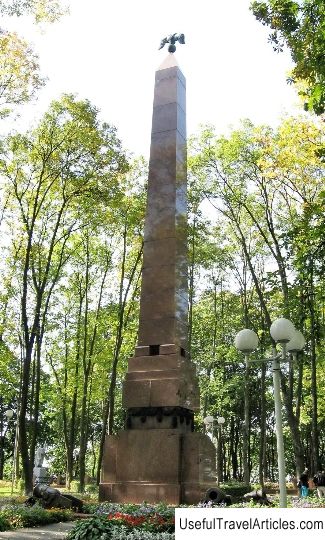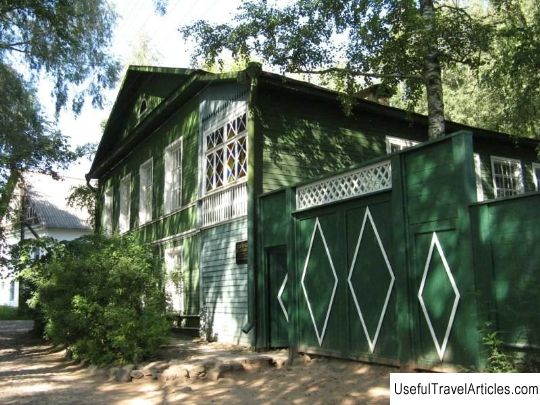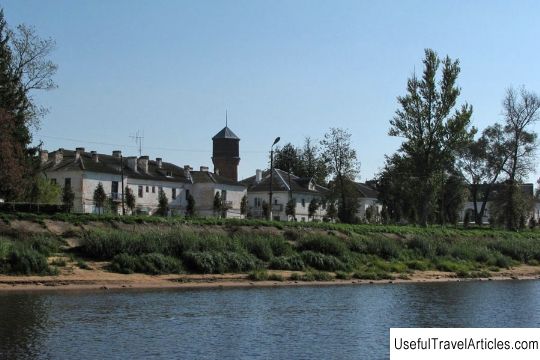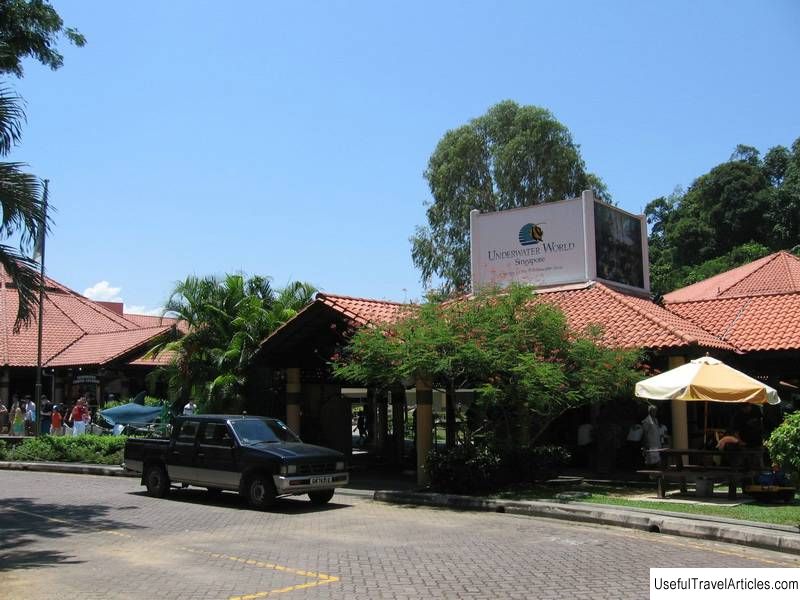Monument ”Eagle” description and photo - Russia - North-West: Staraya Russa
Rating: 8,1/10 (350 votes) 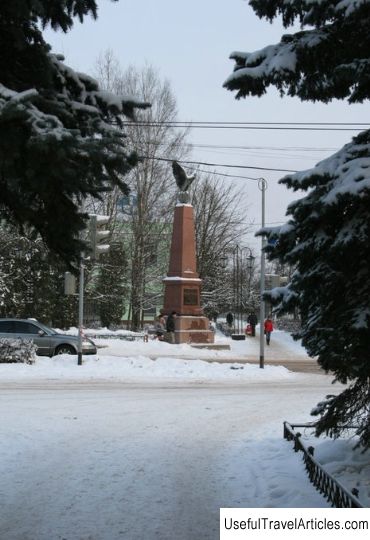
Monument "Eagle" description and photos - Russia - North-West: Staraya Russa. Detailed information about the attraction. Description, photos and a map showing the nearest significant objects. Photo and descriptionThe Eagle monument is located in the Novgorod region in the town of Staraya Russa, at the intersection of Volodarsky and Mineralnaya streets. Made in austere style in the form of a five-meter granite obelisk with a stepped base. At the bottom, the staircase begins with two gray granite low steps and ends with two pink granite steps, higher but smaller in area. Next comes a pedestal with a plaque made of unpolished granite with horizontal projections. The pedestal and obelisk have a four-sided shape. On the obelisk, at the very top, there is a ball made of bronze. The monument is completed by the figure of an eagle with wide spread wings. The history of the monument is connected with the history of the Vilmanstrand 86th Infantry Regiment. The monument immortalized the memory of the infantry, who died heroically in 1904, during the Russo-Japanese War. In August of that year, there were bloody battles near the city of Liaoyang, which was located on the territory of Manchuria in China. The 86th Wilmanstrand Infantry Regiment, which was part of the 22nd Novgorod Infantry Division, also arrived at its destination. Heavy battles took place in the area of the Shakhe River, the Khodyabey position and the Yandyly pass. The warriors of the Wilmanstrand regiment heroically repelled enemy attacks. Almost no one returned alive after these battles. However, the history of this regiment began much earlier than the Russian-Japanese war. In the summer of 1806 in Tver, Major General Gerard formed the Wilmanstrand regiment. At first, it consisted of one company of grenadiers and three companies of musketeers of the Ufa regiment, then more recruits entered it. Wilmanstrand Infantry Regiment, named in 1816, it went through six wars. Among them: two Russian-French wars (1806-1807 and the war of 1812) and the war with the Swedes (1808-1809). They bravely withstood the Eastern War (1853-1856), the Russian-Japanese War (1904-1905) and the First World War. Only in 1918 the glorious and valiant path of this regiment ended. The war with the French in 1806 was held under the command of Lieutenant General Prince Lobanov-Rostovsky. During the war with Finland, the soldiers of the regiment captured the Swedish king and took another two hundred prisoners of war. During the Swedish War, the valiant warriors repelled an attack by 1,100 Swedish soldiers. During the war of 1812, the regiment took an active part in the battles of Smolensk and in the Battle of Borodino under the command of Lieutenant General Tuchkov. During the Crimean War, the regiment bravely defended itself in the north of the Gulf of Finland and Sveaborg, repelling enemy bombed attacks. In 1904, during the Russo-Japanese War, many soldiers of the regiment died in battles, 700 people were injured. For their exploits, two second lieutenants received awards: the Order of St. George the Victorious, 4th degree. The history of this regiment is closely connected with the city of Staraya Russa. This is the place from where soldiers and officers went to the front. Today, on the territory of the Red Barracks, the location of this regiment, is the Staroruspribor plant. In 1913, on October 25, in front of the Red Barracks, during a solemn ceremony and prayer service, the foundation of a new monument was laid. Construction work began immediately after the foundation was laid. The commander of the Wilmanstrand regiment V. Kruglevsky initiated the creation of the monument. It is known that Emperor Nicholas II himself took part in the construction, giving the amount missing for its construction. Fixed assets were collected by city dwellers and patrons. V.P. Martynov, who was a technician-builder of the regiment, was appointed the author of the project and the head of construction work. However, he did not succeed in completing the business he had begun, since in 1914 he was sent to the front. The management of the unfinished construction was entrusted to I.N. Witenberg, who worked as a cemetery master. The monument was opened in 1913. During the Great Patriotic War, the monument suffered some destruction. It was restored in 1953. Fixed assets were collected by city dwellers and patrons.    We also recommend reading Notre Dame Cathedral (Cathedrale Notre-Dame de Lausanne) description and photos - Switzerland: Lausanne Topic: Monument ”Eagle” description and photo - Russia - North-West: Staraya Russa. |
